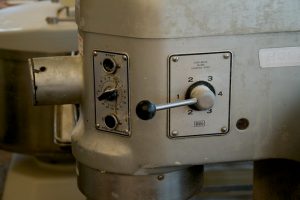 When you manufacture products for chemical, bakery, nutrition, and food sectors, you are probably blending a mixture of powerful ingredients. In many applications, the process of blending is very important in order to maximise the product’s value. If you are working with various ingredients, some might pose allergen risks. While many manufacturers spend a large amount of money on the best packing lines and high-speed mixers, it doesn’t always translate into delivering a favourable ROI (return on investment) or create an efficient long-term solution.
When you manufacture products for chemical, bakery, nutrition, and food sectors, you are probably blending a mixture of powerful ingredients. In many applications, the process of blending is very important in order to maximise the product’s value. If you are working with various ingredients, some might pose allergen risks. While many manufacturers spend a large amount of money on the best packing lines and high-speed mixers, it doesn’t always translate into delivering a favourable ROI (return on investment) or create an efficient long-term solution.
Does Your Company Manufacture a Wide Range of Products?
If you are only manufacturing a single recipe in large volumes without regular changes required, it is best to continuously process using a fixed mixer combined with downstream and upstream processes.
However, with many manufacturers discovering that consumers prefer recipe variety, any changes should be made efficiently and quickly. If you are at a stage where you need to change one or more recipes frequently with the use of different ingredients, batch processing is a better method to manufacture.
Powder Characteristics
Does your company deal with free-flowing powders that are similar in particle size? In these instances when the recipes combine easily a gentle-blending programme is usually the best solution using a ribbon blender or tumble-blender.
The Sizes of the Batches Being Produced
Even though the larger sized blenders usually accommodate full order sizes, the cleaning times and load time will usually increase. It is important to consider the time that it takes to rip and tip 25kg sacks to fill up the blender, followed by discharging the blended product into your packing line. It is also important to consider the time it takes to clean the blender. While mixers are loaded, emptied, and then cleaned, they are not in operation. This could result in significant amounts of downtime.
Work Out the “True” Mixing Time
Do not be fooled by suggestions of 4-minute blend times. The complete end-to-end processing time includes all the blending stages which include filling, packing and cleaning, all of which have to be accounted for. The overall time it will take you to return a mixer to operational use, meaning that it is ready to take on the following batch could be taking 2 hours for loading, followed by 3 hours to pack.
How Easy Is The Mixer to Clean?
Some of the fixed blenders that feature many moving parts, such as a diaphragm pump, often result in loss of product. Every type of fixed blender will leave behind some of the product on the sidewalls or along the bottom of the mixing bowls, or even on the bearings and paddles. This not only results in significant amounts of long-term waste but also the risk of contamination from one batch to the next.
The Risks of Cross-Contamination
As the ingredient numbers start to increase in a recipe, so will the likelihood for one or more allergens to also be present. It is a challenging task for manufacturers to conduct a recipe change-over and a clean-down effectively and efficiently. Since in-line conveying systems and fixed mixers are coupled, it takes a lot of time to clean equipment and parts between each batch to ensure the production line is ready and clean for the next batch.
Here are a few things to keep in mind when mixing powders:
- You can lower how much time you waste for cleaning processes.
- Increased efficiency during the stages of blending can increase your output, which results in the ability to produce more batches in a day or single shift.
- Tumble blenders lower how many operators are needed for cleaning.
- The use of Matcon IBCs with integrated Cone Valve technology translates into less wastage as no product will be left behind in the containers.
- You can manufacture various batch sizes and recipes efficiently.